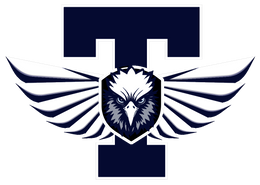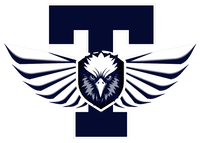Overview
The San Ramon Valley Thunderbirds prioritize the safety and well-being of every athlete above all else. We believe that a safe environment is the foundation of a successful youth football experience. To ensure this, all our Head Coaches and Assistant Coaches are required to undergo rigorous training and certification. This includes USA Football certification, which covers "Heads Up Football" tackling techniques designed to remove the head from contact, as well as mandatory CPR and First Aid training. We maintain a "Zero Tolerance" policy regarding safety violations to ensure that our players, ages 6-14, develop their skills in the most secure environment possible.
Football
Coach Training
The EBYFC Association places important requirements on Coach certification, football fundamentals, and emergency training prior to each season. Our number one responsibility is to create a safe, educative environment for your young player to develop with T-Birds.
Early participation allows your young athlete to develop a strong foundation in throwing, catching, running, and footwork at a stage with lower physical intensity. This makes learning these fundamentals easier and safer before progressing to the higher velocities and impact that come with later stages. It's a win-win: they'll build a solid skill base while their bodies are still growing. We teach slow and right consistency, instead of fast and wrong. Our coaches place great emphasis on building muscle memory that young athletes carry with them day-over-day and season-over-season.
Before parent Coaches or Assistants can step foot on the field, we need to: 1) get a background check (link to be sent by T-Birds); 2) get or have CPR certification; and 3) get certified with USA Tackle Football (required annually). Online CPR certification courses are available through the Red Cross and several providers. All certifications are hard coaching requirements with no exceptions. CPR and USA Tackle Football certification typically take ~3-4 hours. This creates a safe environment for all players and parents. You may find a lot of parents who lend an on-field hand for a single practice. They need to be certified in all three categories above. Parent game volunteers (e.g., MPRs, Videographer, Chain Gang, etc.) are not required to be certified.

Guardian Caps
EVERY T-Bird Football athlete will be equipped with a Guardian Cap 2.0 for the 2026 season.
Helmet Safety
We are proud to announce a massive step forward in player safety! Starting in the 2026 season, EVERY San Ramon Valley T-Bird football athlete will be equipped with the new Navy Guardian Cap 2.0. Thanks to the incredible generosity of a T-Bird family, our athletes will now have access to the premier soft-shell helmet cover used by NFL and college programs across the country.
Why this matters: The Guardian Cap 2.0 is engineered to reduce impact. Its soft-shell technology absorbs energy during collisions, adding a critical layer of protection over the standard hard-shell helmet. This means our players can practice and play with greater confidence, backed by science.

Injury Reporting Procedures
Clear communication regarding injuries is vital for player safety and insurance purposes. If an incident occurs during a practice or game, our Head Coaches are required to document the details immediately using the official injury report. This ensures that the league and parents have a consistent record of the event and that proper follow-up protocols are initiated.

Concussion Protocol and Return to Play
We strictly adhere to the USA Football Concussion Management Guidelines. Any athlete suspected of sustaining a concussion will be immediately removed from play and evaluated. No athlete may return to activity on the same day of a suspected concussion.
Return to Play Progression
Once a player has been diagnosed with a concussion, they must follow a graduated, day-by-day return-to-play protocol under the supervision of a medical professional. This ensures the brain has adequate time to heal. The progression is as follows:
- Step 1: Back to Regular Activities: The athlete attends school and performs daily tasks without symptoms. No physical sports activity.
- Step 2: Light Aerobic Activity: 5-10 minutes of walking or stationary biking. No resistance training. The goal is to increase heart rate slightly.
- Step 3: Moderate Activity: Moderate jogging, brief running, or moderate-intensity stationary biking. No head impact activities.
- Step 4: Heavy, Non-Contact Activity: Sprinting, high-intensity stationary biking, and regular weightlifting. Non-contact football drills (3 planes of movement) are allowed.
- Step 5: Practice & Full Contact: Following medical clearance, the athlete may return to controlled full-contact practice.
- Step 6: Competition: The athlete is fully cleared for game play.
Required Medical Release
Before an athlete can return to the field for Step 5, parents must submit a signed medical clearance form.

Practice Attendance & Safety Policy
Football is a team sport that relies heavily on coordination and preparedness. Missing practice is not just about missing plays; it is a safety issue. Players who miss instruction on technique, blocking schemes, or game plans are at a higher risk of injury to themselves and their teammates because they are not properly prepared for game-speed situations.
To maintain the highest safety standards, we enforce the following attendance policy for unexcused absences (exceptions are made for mandatory school events or outdoor education):
- Miss 1 Practice: The player will receive limited game time during the upcoming match.
- Miss 2 Practices: The player will automatically be restricted to the league-mandated minimum plays for the upcoming match.
- Miss All Practices (Weekly): If a player has an unexcused absence for all practices in a game week, they will not be able to play in that weekend's game.

Weather Protocol
We closely monitor weather conditions to protect our young athletes. Our decisions to practice or play are based on real-time data regarding heat, air quality, and storms.
- Heat: In events of extreme heat (Heat Index 100+), we modify practices to remove equipment (helmets/pads), increase water breaks, or cancel activity entirely if conditions are unsafe.
- Air Quality (AQI): We follow local health guidelines regarding wildfire smoke. If the AQI reaches unhealthy levels for sensitive groups, practice intensity is reduced or canceled.
- Lightning: If lightning is detected within a 10-mile radius, all outdoor activities are immediately suspended. Play cannot resume until 30 minutes have passed since the last lightning strike or thunderclap.

Heat Safety & Wet Bulb Globe Temperature (WBGT)
In 2025, we will strictly follow High School guidance regarding Heat and Air Quality Index (AQI) for all practices. To ensure the most accurate assessment of environmental danger, we utilize the Wet Bulb Globe Temperature (WBGT) index rather than a standard thermometer.
What is the Wet Bulb Index?
The WBGT is the gold standard for measuring heat stress in direct sunlight. unlike simple temperature readings, the Wet Bulb Index factors in five critical variables: temperature, humidity, wind speed, sun angle, and cloud cover (solar radiation). This comprehensive data allows us to understand the true physical impact of the weather on our athletes and make data-driven decisions on when to modify practice intensity, remove equipment (pads/helmets), or cancel practice entirely to prevent heat illness.
Game Day Protocol
While the T-Birds organization monitors WBGT and AQI proactively during the practice week, please note that on game days, the Referees maintain the final authority to make calls regarding canceling or suspending games based on on-field conditions.
Want to Learn More?
Made it this far and interested in athlete safety, coaching, or just learning more about how you can help the T-Birds organization thrive even more? We would love to hear from you!
Email: srvtbirds@gmail.com


